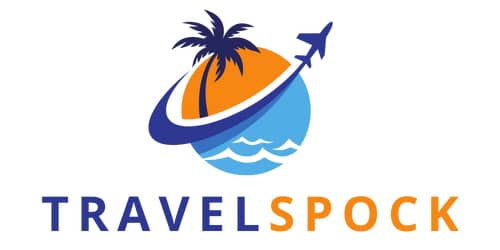Gen X and Y individuals may still fondly remember the age of Concorde when it was possible to fly between London and New York in under three hours!
The fatal Air France Flight 4590 in 2000 and subsequent retirement of Concorde in 2003, shattered the aspirations of many to experience supersonic flight.
But 20 years later, a next-generation airplane is putting supersonic air travel back on the agenda.
Join me as we deep dive into Boom Supersonic Mach 1.7 Overture airplane which you could be flying on as soon as 2029!
Supersonic Air Travel by 2029 – Really?
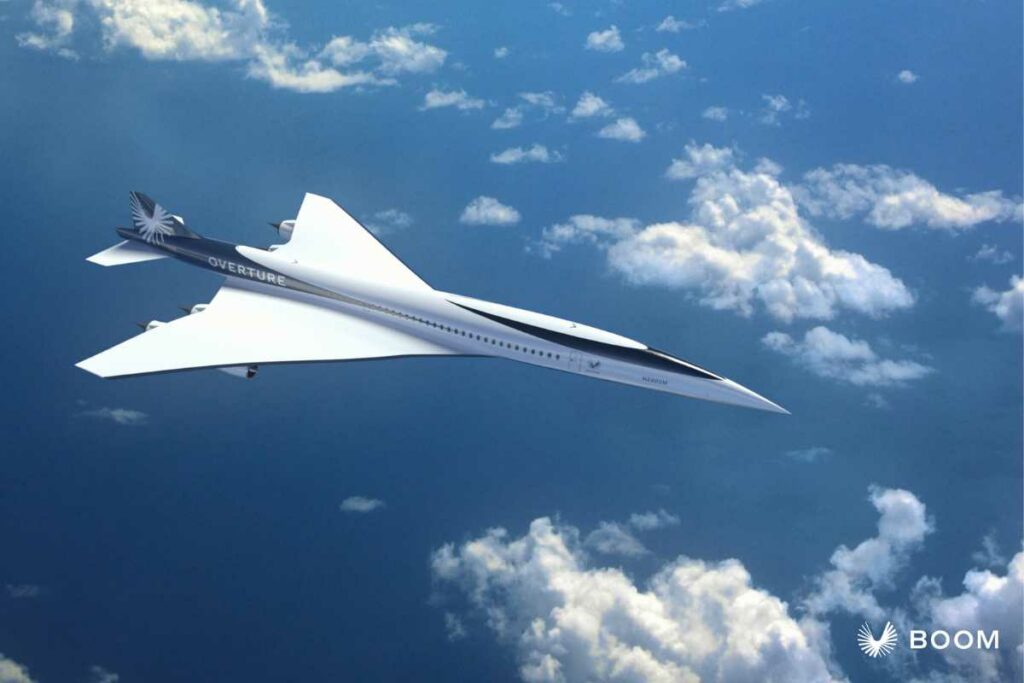
After Concorde was grounded, the commercial aviation industry turned its back on supersonic air travel with zero investment in a new supersonic airliner.
Truth be told, Concorde was costing more to run than it earned, meaning it was no longer commercially viable and no company wanted to take the risk of sinking in the billions of dollars necessary to create a new supersonic airliner.
Enter Boom Supersonic
The impetus for a new supersonic airliner has come from the wildcard start-up Boom Supersonic.
The company was founded by amateur aviator and tech entrepreneur Blake Scholl in 2014 with the audacious ambition of delivering a supersonic business-class airplane by 2029.
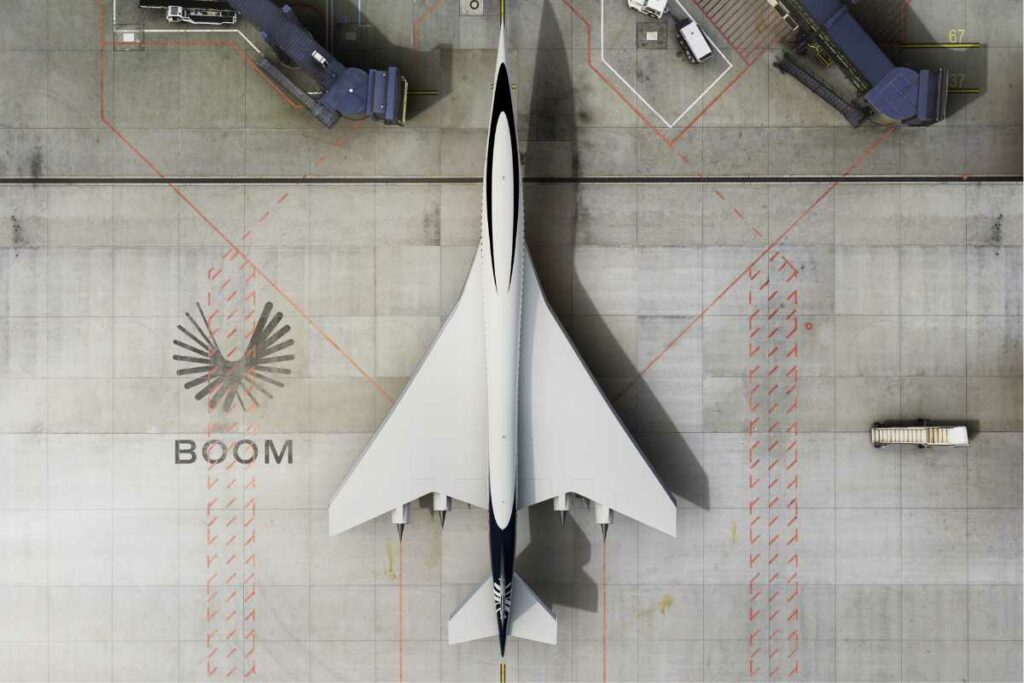
With no aviation industry experience Scholl, and aerospace pros Joe Wilding and Josh Krall have shocked the world with the development of a viable 88-seater supersonic airliner called the Overture.
Not only have they created a working prototype supersonic aircraft, but they have also secured hundreds of millions of dollars of investment and 130 orders and pre-orders from bona fide airlines like Japan Airlines, United Airlines, American Airlines, and Virgin Atlantic.
If you’re still in doubt that Boom Supersonic is serious, the ground was broken on their 400,000 square feet manufacturing facility in Greensboro, North Carolina earlier this year. So, this really is an aerospace company you need to keep an eye on!
A Closer Look at the Boom Overture
In a remarkable feature of aerospace design and engineering, Boom Supersonic is bringing the Overture airliner to the market within a decade.
This supersonic commercial airliner will be the first of its kind.
The engineering and technology it uses to sustain supersonic flight are novel, with stakeholders and industry partners like NASA, Aernnova, and GE Additive contributing state-of-the-art materials and components to realize the Overture’s ambitious design.
Boom Overture Design and Features
The Overture features a novel aerodynamic design, with a compound delta confirmation that limits drag as it flies.
Its gull-wing formation and use of unique composite carbon-fiber materials will help it achieve its specified Mach 1.7 speed.
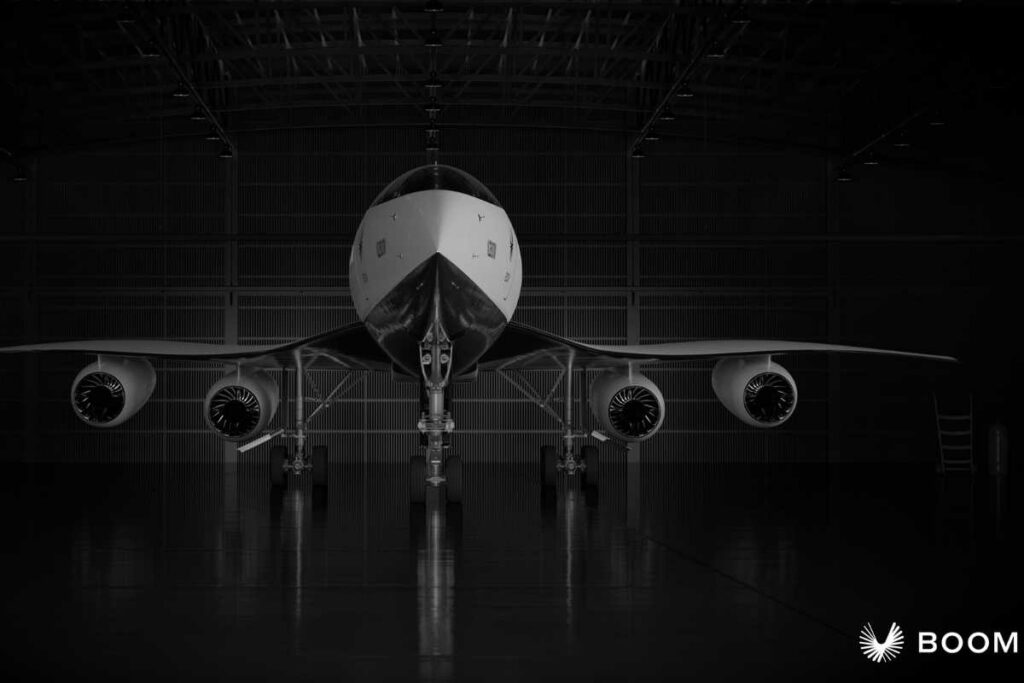
It has been designed for business-class travel with a maximum capacity of 88 passengers, depending on how the aircraft is fitted.
One of the most important features of the Overture is its engines. Boom Supersonic has worked with aerospace industry leaders like Rolls Royce to develop a novel class of supersonic engine called The Symphony.
Symphony engines are currently conceptual but have been designed to run on sustainable aviation fuel (SAF), a special class of fuel made from waste cooking oil and other non-petroleum fuel sources.
Here are the headline specs of the Boom Overture:
- Aircraft type: Passenger supersonic airliner
- Nose-to-tail length: 61 meters (201 feet)
- Wingspan: 18 meters (60 feet)
- Maximum weight at take-off: 77,111 kg (170,000 pounds)
- Engines: At least four Symphony medium-bypass turbofan engines
- Fuel type: 100% Sustainable Aviation
- Cruise speed: Mach 1.7 (1.7 times the speed of sound)
- Cruise altitude: 60,000 feet
- Maximum range: 7867 kilometers (4,890 miles)
- Passenger capacity: Between 60 and 85 passengers, depending on business-class interior fitting
Boom Supersonic has already built a scale prototype of Overture
In 2020, Boom Supersonic unveiled a one-third-scale demonstrator aircraft, using the materials and design that will feature in the Overture.
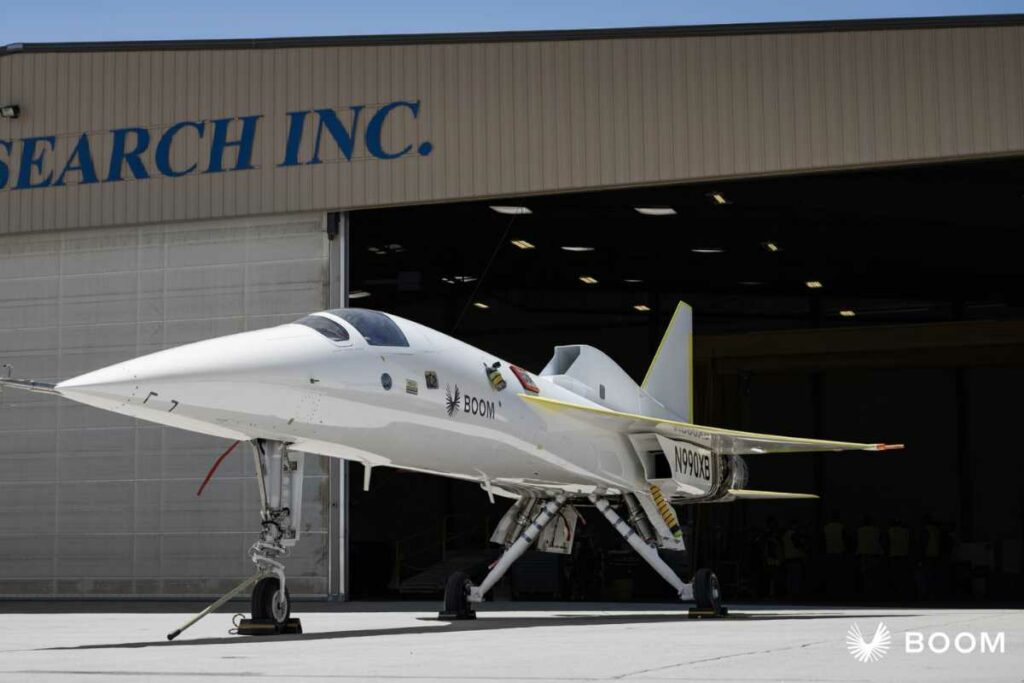
The Boom XB-1 is a Mach 2.2 tri-jet airplane that has been undergoing taxi tests since 2022 with crewed flights due to commence later this year.
Supersonic flight sans sonic boom
One factor that has inhibited the development of commercial supersonic aircraft is the prohibition on supersonic flight that exists in many countries around the world.
Since 1971, civilian supersonic flight has been banned over land in the US, affecting the destinations that Concorde could serve, and potentially Boom’s Overture.
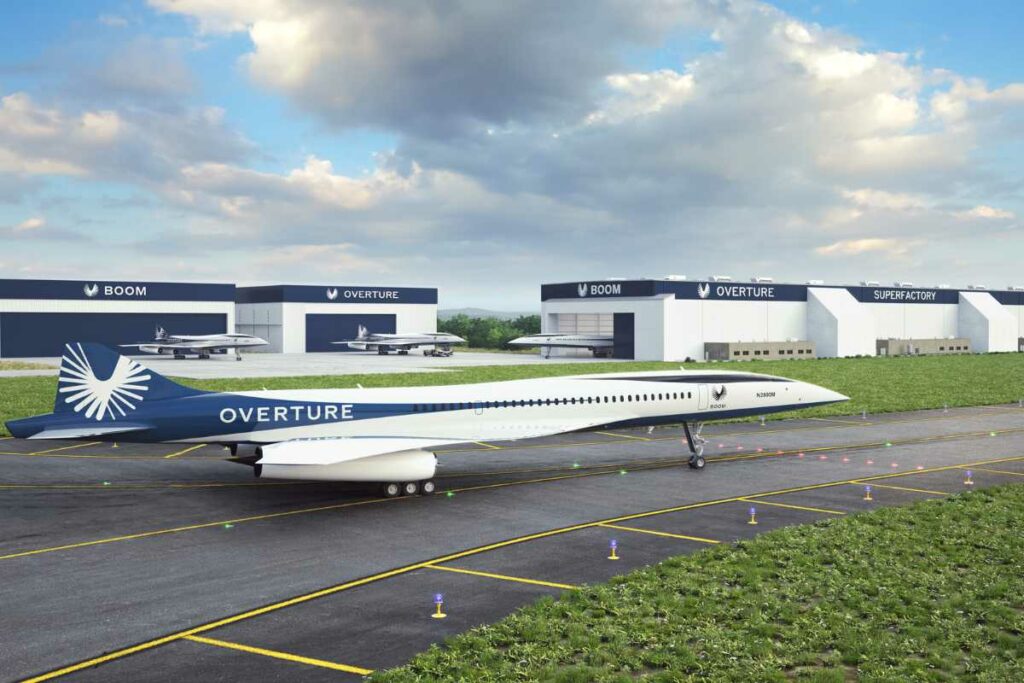
This is reflected in the maximum speeds that the Overture can achieve, with the aircraft achieving speeds that are 20% faster over land than conventional commercial airliners, but twice as fast over water.
NASA and Boom Supersonic have been lobbying hard to overturn the ban on civilian supersonic flight.
In the interim, both companies are harnessing technologies like SAI Quiet Supersonic Transport (QSST) and laminar supersonic flow technology to make the Overture sonic boom-free.
There are at least 600 destinations worldwide that can be served by the Boom Overture
Boom Supersonic Overture is capable of achieving speeds that are at least twice the speed of a standard commercial airliner.
This airplane is set to revolutionize business-class travel with Boom Supersonic suggesting over 600 global destinations that could be served with a supersonic flight route.
Here’s my take on what the most popular supersonic routes would be in 2029:
- Boom Supersonic Overture could fly from Los Angeles to Shanghai in 7 hours (rather than 13 hours 40 minutes currently)
- Boom Supersonic Overture could fly from Los Angeles to London in 5 hours (rather than 11 hours currently)
- Boom Supersonic Overture could fly from Atlanta to Madrid in 4 hours 35 minutes (rather than 8 hours 5 minutes currently)
- Boom Supersonic Overture could fly from Brussels to New York in 4 hours 40 minutes (rather than 8 hours 15 minutes currently)
- Boom Supersonic Overture could fly from Honolulu to Tokyo in 4 hours 10 minutes (rather than 8 hours 25 minutes currently)
- Boom Supersonic Overture could fly from Lima to Los Angeles in 4 hours 40 minutes (rather than 8 hours 15 minutes currently)
- Boom Supersonic Overture could fly from Zurich to Philadelphia in 4 hours 50 minutes (rather than 9 hours currently)
- Boom Supersonic Overture could fly from San Francisco to Seoul in 8 hours 10 minutes (rather than 12 hours currently)
- Boom Supersonic Overture could fly from Los Angeles to Paris in 6 hours (rather than 11 hours currently)
- Boom Supersonic Overture could fly from New York to Rome in 4 hours 45 minutes (rather than 8 hours currently)
There is massive passenger demand for supersonic air travel
Boom Supersonic has been able to raise the majority of its investment for the development of the Overture from private investors and venture funds, with more than $200 million raised so far.
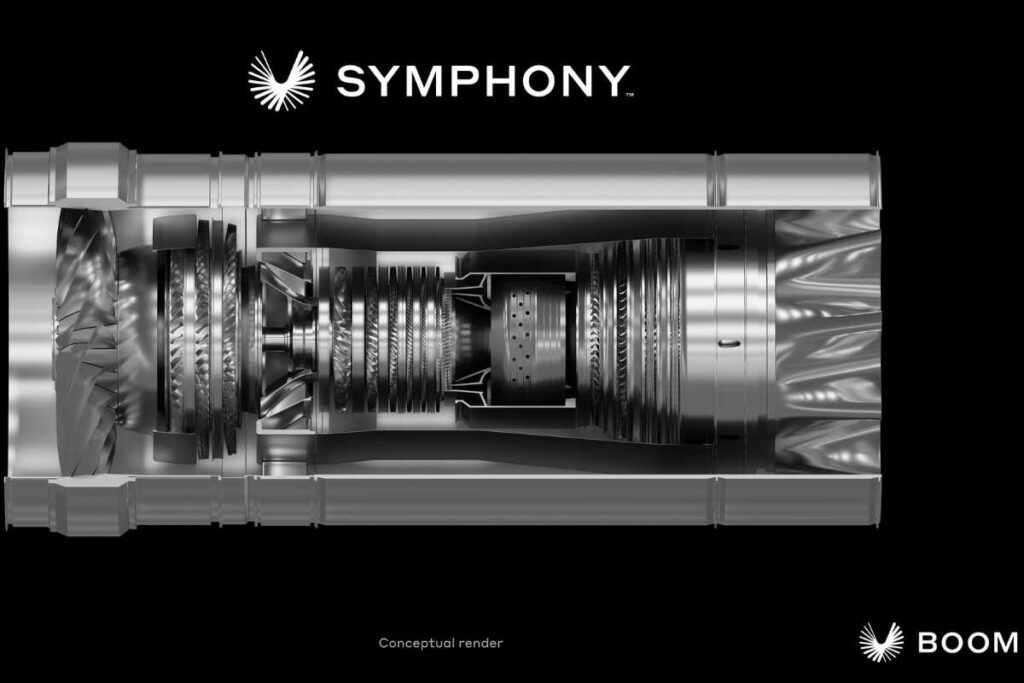
This plucky start-up is getting a lot of love from stakeholders who want to see the return of supersonic air travel.
Boom Supersonic is confident that there is a massive market for supersonic flights around the world, particularly in the corporate travel sector.
Supersonic flight is on the agenda for both corporate and leisure travel with over 95% of a surveyed group of businesspeople reporting that their organizations are actively discussing supersonic air travel and are willing to switch to airlines that could offer supersonic flights.
Not everyone is Team Boom Supersonic
Environmentalists are horrified at the plans to reintroduce fuel-intensive and polluting supersonic air travel in an age where there are serious concerns about the impact of air travel on the environment.
In response, Boom Supersonic is putting in the effort to ensure the Overture is as sustainable as possible.
The company is committed to net zero carbon by 2025 and is seeking to decarbonize its aviation efforts by only using sustainable aviation fuel, provided by Dimensional Energy for its test flights.
Rounding Up
Supersonic air travel is on its way back and the Boom Overture is a serious contender for the first supersonic civilian airplane in two decades.
So far things are largely on track for the 2029 take-off of the first flights, with Boom Supersonic aiming to launch production of the Overture by 2025, with the rollout of the first planes in 2026.
This is definitely a company to watch if you’re determined to have a 21st-century Concorde experience!
- The Secret Travel Locations Bloggers Haven’t Discovered Yet
- Stress-Free Breaks: Choosing the Perfect Getaway for Overworked Professionals
- Inside Secrets: The Quick Guide to Planning Your Dream Vacation
- Hidden Gems vs Tourist Spots: Saving Pounds on Your Next Vacation
- Master the Art of Travel Thrifting: Tips from the Pros
- Travel Like a Spy: Secret Skills for Safe Adventuring
